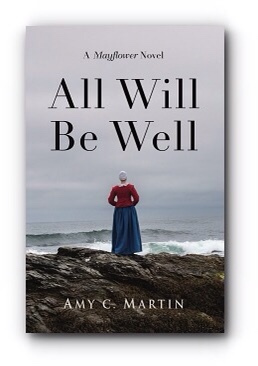 One look at the Buttolph-Williams house is enough to transport the imaginative viewer straight back to America’s earliest century. Built in 1711, this first period building is typically medieval-English in style, with its massive posts and beams, its overhangs and finials, and its small leaded paned windows. It represents the most authentic restoration of a 17th century style dwelling in the CT River Valley, and contains a lovely collection of early furniture, kitchenware, and ceramics.
One look at the Buttolph-Williams house is enough to transport the imaginative viewer straight back to America’s earliest century. Built in 1711, this first period building is typically medieval-English in style, with its massive posts and beams, its overhangs and finials, and its small leaded paned windows. It represents the most authentic restoration of a 17th century style dwelling in the CT River Valley, and contains a lovely collection of early furniture, kitchenware, and ceramics.
Few people are aware, however, that the Buttolph-Williams House was a source of inspiration, and the partial setting, for the Newbery Medal-winning book The Witch of Blackbird Pond, by Elizabeth George Speare. This fictional classic is based upon the story of Kit Tyler, an orphaned adolescent girl forced by necessity to live with her uncle’s family in Connecticut, who becomes involved in a case of suspected witchcraft when she befriends Hannah Tupper, a local woman who does not conform to Puritan standards of the day. Author Speare witnessed the restoration of the Buttolph Williams house in the 1950’s, and learned at the same time about the witchcraft trials and executions that took place in Wethersfield in the 1660’s, a full three decades before Salem.
the Newbery Medal-winning book The Witch of Blackbird Pond, by Elizabeth George Speare. This fictional classic is based upon the story of Kit Tyler, an orphaned adolescent girl forced by necessity to live with her uncle’s family in Connecticut, who becomes involved in a case of suspected witchcraft when she befriends Hannah Tupper, a local woman who does not conform to Puritan standards of the day. Author Speare witnessed the restoration of the Buttolph Williams house in the 1950’s, and learned at the same time about the witchcraft trials and executions that took place in Wethersfield in the 1660’s, a full three decades before Salem.
Today the house is operated as a museum, and the rooms have been arranged to reflect various scenes in The Witch of Blackbird Pond. To see enlargements of photos, click on each image.
Kitchen hearth with settle and flax wheel. In this location, Mercy did her spinning, Kit spoiled the hasty pudding, and the Dame School was taught. Mercy, who had difficulty walking, slept by the fireside.

The hall, or best room, where the John and William called upon Kit and Judith. The young people knitted, ate popcorn, and
did some reading while “courting.”

The second floor chamber shared by Kit and Judith.

The Buttolph Williams House is owned by Connecticut Landmarks. To learn more or plan a visit: http://www.ctlandmarks.org/index.php
Links to info about real Connecticut witchcraft trials:
https://yourehistory.wordpress.com/2007/05/15/before-salem-first-to-die/
https://yourehistory.wordpress.com/2007/07/09/before-salem-first-to-confess/



 the Newbery Medal-winning book The Witch of Blackbird Pond, by Elizabeth George Speare. This fictional classic is based upon the story of Kit Tyler, an orphaned adolescent girl forced by necessity to live with her uncle’s family in Connecticut, who becomes involved in a case of suspected witchcraft when she befriends Hannah Tupper, a local woman who does not conform to Puritan standards of the day. Author Speare witnessed the restoration of the Buttolph Williams house in the 1950’s, and learned at the same time about the witchcraft trials and executions that took place in Wethersfield in the 1660’s, a full three decades before Salem.
the Newbery Medal-winning book The Witch of Blackbird Pond, by Elizabeth George Speare. This fictional classic is based upon the story of Kit Tyler, an orphaned adolescent girl forced by necessity to live with her uncle’s family in Connecticut, who becomes involved in a case of suspected witchcraft when she befriends Hannah Tupper, a local woman who does not conform to Puritan standards of the day. Author Speare witnessed the restoration of the Buttolph Williams house in the 1950’s, and learned at the same time about the witchcraft trials and executions that took place in Wethersfield in the 1660’s, a full three decades before Salem.








